Our Community and Citizen Science Symposium Speakers
- By AMS Staff
- Jan 25, 2022
We are thrilled to have an amazing line up of speakers for the upcoming Weather Band Citizen and Community Science Symposium. To give you a small sneak preview of what's to come, here are short biographies for some of our speakers. They are arranged alphabetically by day. A huge thank you to all of our speakers!
FRIDAY, JANUARY 21
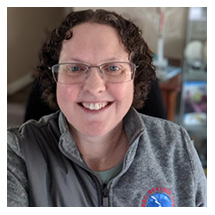 Nikki Becker
Nikki Becker
Nikki Becker is the Observing Program Leader at National Weather Service in Gray, Maine. She has worked for the National Weather Service for the last 15 years, starting out in Juneau, Alaska and moving to Maine in 2012. She currently manages multiple Weather Forecast Office Programs relating to observations that includes over 95 Cooperative Weather Observing sites across Western Maine and the state of New Hampshire. Nikki has a Bachelor and Master’s Degree from Mississippi State University in Geosciences: Operational/Applied Meteorology. Prior to working for NWS, Nikki is a 9 year veteran of the United States Air Force and Navy Reserves where she got her start in Meteorology. Over the last 20 years, she has been involved in education outreach covering a wide range of science topics with a focus on weather forecasting and observing.
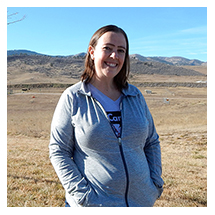 Dr. Becky Bolinger
Dr. Becky Bolinger
Becky Bolinger received her B.S. in meteorology from Metro State University of Denver, M.S. in meteorology from Florida State University, and her Ph.D. in atmospheric science from Colorado State University. She is now the Assistant State Climatologist at the Colorado Climate Center (within CSU’s department of Atmospheric Science). Her research interests are focused on Colorado’s climate variability, climate extremes, and drought. She spends her spare time with her husband and daughter, hiking, cycling, running, and enjoying Colorado’s beautiful outdoors.
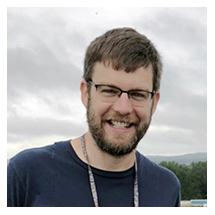 Christopher Bridges
Christopher Bridges
Christopher Bridges is a teacher and weather observer who works to incorporate precipitation monitoring into science education and applied problem solving. He completed a BS in natural resources management from the University of Tennessee Martin, an MSc from Southern Illinois University Carbondale, and a Master of Arts in Teaching degree in secondary science education from the University of Memphis.
 Jeffrey Man Hei Chang
Jeffrey Man Hei Chang
Jeffrey Chang is currently a PhD student focusing on Urban Climate Modeling and Environmental Monitoring Networks at The University of Hong Kong (Department of Geography). Before his postgraduate studies, he studied Energy and Environmental Engineering at the City University of Hong Kong, where he gained much of his experience in urban weather monitoring via the Hong Kong Observatory internship program. His interests include electronic sensor development, smart city applications, urban meteorology, and mesoscale weather forecast.
Julia Kumari Drapkin
Dedicated to connecting communities to their changing environment to develop solutions together, Julia Kumari Drapkin is the CEO of ISeeChange. ISeeChange is a climate tech and data platform where local leaders, engineers, utilities, and the public build solutions together. Drapkin founded ISeeChange after reporting natural disasters and climate change for 12 years across the globe and in her own backyard on the Gulf Coast.
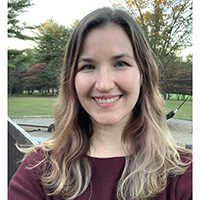 Melissa Goodwin
Melissa Goodwin
Melissa Goodwin is AGU Thriving Earth Exchange’s Manager for Operations and Volunteer Engagement. In this role, Melissa facilitates meaningful engagement with Fellows and Community Scientists in our network, and maintains Thriving Earth Exchange’s operational systems and project tracking infrastructure. Since joining AGU Thriving Earth Exchange in 2016, Melissa has supported dozens of community science projects across the United States and contributed to the launch of the Resilience Dialogues and Thriving Earth Exchange’s Community Science Fellowship program. Her past work includes positions with the Renewable Natural Resources Foundation and ENVIRON International Corp. Melissa has an M.S. in Environmental Sciences and Policy with a focus in Energy and Climate Change from Johns Hopkins University and a B.S. in Chemistry and Environmental Science from The College of William and Mary. She is also a certified Project Management Professional (PMP). Melissa’s favorite things include her family (Jason, Jude and Dory the dog), acquiring more books than she has time to read, and any well-designed spreadsheet.
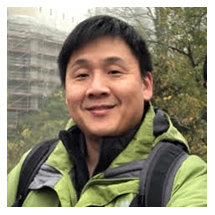 Dr. Nicky Yun Fat Lam
Dr. Nicky Yun Fat Lam
Dr. Nicky Y.F. Lam is an Associate Professor at the University of Hong Kong. He received his BS (2001) in Civil Engineering, MS (2004) in Environmental Engineering and PhD (2010) in Civil Engineering in the department of CEE at the University of Tennessee, Knoxville. Dr. Lam is interested in a variety of climate and air quality researches, including ambient air quality sampling, permitting, emission inventory development and future air quality and climate change modeling. His research focuses include regional climate and chemistry downscaling, future climate change, ozone stratosphere-troposphere exchange (STE), Asian biomass burning, and ozone pollution. Dr. Lam has been a trainer for climate and air quality models for various government agencies, including Hong Kong Environmental Protection Department (HKEPD) and Asia Center for Air Pollution Research (ACAP) in Japan.
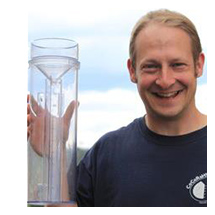 Noah Newman
Noah Newman
Noah Newman is the education and outreach coordinator for the Community Collaborative Rain, Hail and Snow (CoCoRaHS) network. Noah began his career teaching informal science education in 2002 at a local science museum – teaching topics such as astronomy, zoology, magnets and rocketry - but now loves educating people of all ages and backgrounds about how to measure precipitation. Noah joined CoCoRaHS in 2009 after working with The GLOBE Program for several years.
 Amber Silver
Amber Silver
Dr. Amber Silver is an Assistant Professor for the College of Emergency Preparedness, Homeland Security and Cybersecurity at the University at Albany. She received her Ph.D. in Geography and Environmental Management from the University of Waterloo in Ontario, Canada. Her primary research interests focus on how individuals and groups make decisions before, during, and after high-impact weather. More specifically, she is interested in the roles that public attention, risk perception, and communication play in protective action decision making during extreme events. Her most recent research has focused on the ways that new technologies, including social media, influence how individuals obtain, interpret, and respond to official and unofficial warning information.
Victoria Slonosky
Victoria Slonosky is an historical climatologist. She studied climatology at McGill and earned her PhD in environmental sciences from the Climatic Research Unit, UK. She is currently leading McGill’s Data Rescue: Archives and Weather (DRAW) interdisciplinary citizen science project and is an affiliated member of the Centre for Interdisciplinary Research on Montreal. She also leads the Canadian chapter of the Atmospheric Circulation Reconstruction over the Earth (ACRE) project; ACRE-Canada volunteers have transcribed over half a million Canadian historical weather records. In 2021, Slonosky became founding president of Open Data Rescue, a non-profit corporation to discover, curate, transcribe and analyze historical environmental observations. Her book, Climate in the Age of Empire: Weather Observers in Colonial Canada, tells the story of Canada’s scientific heritage in the field of climatology.
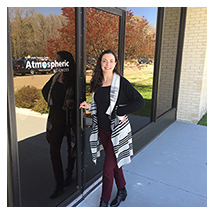 Jessica Taylor
Jessica Taylor
Jessica Taylor grew up in Florida where her love of thunderstorms led her to pursue a career in atmospheric science. Jessica began making GLOBE weather observations in 2000 as a student at Florida State University. Now as a Research Scientist at NASA, Jessica is the Principal Investigator for GLOBE Clouds. In 2021, more than 220k observations of clouds and sky conditions were documented and submitted to GLOBE’s worldwide database.
 Joey Williams
Joey Williams
Joey directs operations of the Climate Adaptation Planning Analytics (CAPA) Heat Watch program and assists with organizational growth of CAPA Strategies. He combines his process design skills as a former engineer with his passion for human and environmental health to help the CAPA team advance climate resilience efforts in cities around the US and world. He earned his Master’s in Urban and Regional Planning from Portland State University, where he served as a graduate research assistant in the Sustaining Urban Places Research Lab. In his free time he enjoys backpacking, running, cooking new recipes, and drawing.
Saturday, January 22
 Ted Best
Ted Best
Ted has a lifelong interest in weather, especially severe local storms and mesoscale convective systems. He served as a Skywarn volunteer coordinator in north Texas for 6 years and as a CoCoRaHS volunteer observer for the past 14 years in 3 different states. During his time as a Skywarn volunteer in north Texas, he worked with meteorologists from the National Weather Service office and co-authored two case studies about convective wind events that were published in online journals. He was also a member of the AMS local chapter in north Texas and has been an associate member of the AMS since 2002.
Ted holds a Bachelor of Science degree in Chemistry from the University of Illinois and has worked as a chemist in the paint and coatings industry where he is currently a Research Fellow. His career interests include atmospheric corrosion and the development of corrosion resistant coatings.
Peter Callen
Peter Callen has been a regular CoCoRAHS participant for over 11 years now with over 4,000 daily observations. He has lived in the West his whole life of 59 years, so far... including CA, CO and the past 20+ years in NM. A life long gardener, orchard keeper and skilled laborer of many stripes, he is currently doing contract work with the City of Albuquerque to turn degraded farmland into high quality wildlife habitat. Years of firefighting in CA have permanently tuned his awareness to the weather and how it has been changing in his lifetime.
Candice Erdmann
Candice Erdmann, MLIS, has a love of physical and quantitative sciences which have taken on many forms — from health sciences to neuroscience to molecular biology and immunology, to human services data and information science.
Most of all, she enjoys observing the natural world — plants, animals, weather, etc.
Having spent her childhood in the Colorado Front Range and High Plains of Wyoming, severe weather, and especially winds, have always been of keen interest. Currently living 60mi (100km) inland from the Pacific Ocean, with a view of the Oregon Coast Range, one of her favorite activities is watching the clouds seemingly pile up against the continent before coming ashore.
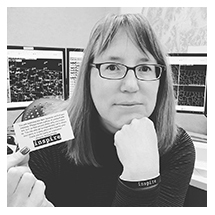 Tanja Fransen
Tanja Fransen
Tanja Fransen is the Meteorologist in Charge at the NOAA/National Weather Service (NWS) office in Glasgow, MT, leading a talented team that provides weather, water and climate services to northeast Montana. Fransen has served on the NOAA Education Council and the NWS Networking and Mentoring Committee, and she co-led the NWS Skywarn program. She served on the council of the American Meteorological Society (AMS), Chaired the AMS Virtual 2021 Annual Meeting, and has been involved in many committees and boards. She received her bachelor’s degree in Earth Science: Meteorology, from the University of Northern Colorado in 1995, and has spent her 27 year career in the high plains. In 2014, she had the great honor of receiving the AMS Kenneth C. Spengler Award for leadership and innovation across the weather enterprise. She has received the NWS Isaac Cline Award for Leadership and for EEO/Diversity Management, and the NOAA Administrator’s Award in 2011 for the development of the Cold Advisory for Newborn Livestock system.
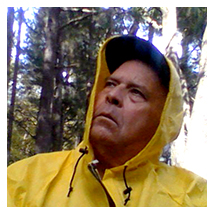 Daniel Gassaway
Daniel Gassaway
Daniel Gassaway was a practicing respiratory therapist (Registered Respiratory Therapist by the National Board for Respiratory Care, NBRC) for over 20 years. He has actively contributed weather observations in the “Community Collaborative Rain, Hail, and Snow network” (CoCoRaHS) since 2014. His data collection and analysis are not funded or sponsored by any outside agency, equipment manufacturer, or organization.
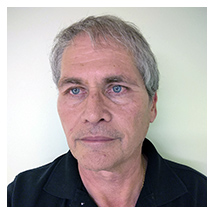 Richard Haltermon
Richard Haltermon
Rick Haltermon worked as a Computer Systems Analyst at the Federal Reserve Bank for 35 years. When not working Rick pursued his lifelong interest in meteorology by taking online classes from Penn State, developing a web site to present 25 years of data from his home weather station, and volunteering as a trained weather spotter. Rick is also an amateur radio operator and works as a Volunteer for the Amateur Radio Emergency Services providing communications when normal communications are disrupted. Mr. Haltermon has a bachelor’s degree from Thomas More University and has competed training in Incident Command System taught by the FEMA Emergency Management Institute. He lives in Union, KY with his wife of 43 years and gets his exercise playing with his grandkids.
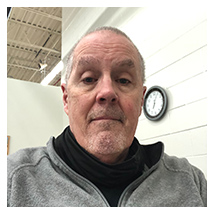 James Kendall
James Kendall
James Kendall has been a member of CoCoRaHS for 10 years and has been interested in the weather since he was in high school. He became especially interested in hurricanes because of the Great New England Hurricane. He enjoys spending time with his two children and his wife of over 34 years. He is also involved with the ham radio community, and holds his General License for amateur radio operations.
 Craig Lowe
Craig Lowe
Craig Lowe is the Founder, President, and Divisional Command Coordinator for the Storm Intercept Weather Network. With over 16 years of experience in Storm Tracking and Hurricane Intercepting. Craig has devoted his life to assisting Local and International forecasters with the truth on the ground from inside of the world's most dangerous and deadly weather events. Creating a system that aids the Bahamian public in decision support before during and after major weather events Craig and his team of over 30 weather spotters have brought weather readiness to the forefront of the Bahamian mindset. Believe it or not in his downtime he works as a beach attendant for Blue Lagoon Island which happens to be one of the only excursions which utilize WeatherStem instruments to aid in decision support for their operation. Through his downtime on the island, Craig works to bring weather and the beauty of the Bahamas to each and every visitor. Weather is his life.
 Gerald Myers
Gerald Myers
Gerald has been interested in meteorology since he was in elementary school in central Massachusetts in the 1950s. [I am old enough to remember the aftermath of the 1953 Worcester, MA tornado and the terrible floods from Hurricane Diane in 1955, along with numerous winter nor’easters.] He is a retired accountant; and taught cost accounting and accounting systems at Pacific Lutheran University in Tacoma, WA for just over 30 years. He now lives southeast of Seattle. He is a CoCoRaHS observer [WA-KG-81; 13 years to date]; you can find his data at https://www.wrh.noaa.gov/mesowest/getobext.php?wfo=sew&sid=C2224&num=48 (APRSWXNET/CWOP) and https://www.wunderground.com/dashboard/pws/KWARENTO9 [Weather Underground].
 Michael Ray
Michael Ray
Michael Ray is a long-time weather watcher. He built his first weather station as a ten year old. He recently retired from his career as a human resource trainer and organization development specialist for the University of Arizona Libraries. He is using his retirement to provide leadership to neighborhood and community groups. In 2015 his interest in weather combined with his neighborhood leadership to help with Building Resilient Neighborhoods, a task force supported by Physicians for Social Responsibility to organize neighborhoods for heat emergencies. That resulted in his turning his imagination and artistic background to the adaptation of his garden to the increasing heat caused by climate change. In 2012 he began a citizen science project to reimaging the greenhouse, given how useless it is most of the year in Tucson, unless you have the income to pay for air conditioning to offset the hot-house on steroids that greenhouses are in the desert environment. This led him to research materials and structures that could adapt to all the seasons of the desert, where temperatures range from a low of 17? F in the January 2013 to a June 2017 high of 116? F . The result is the Nurse Tree Arch (Google it), a convertible “Screen to Greenhouse” structure that used design wisdom from the field of bio-mimicry using desert nurse trees as its inspiration. At this AMS conference Michael will demonstrate a unique graph of the climate variables of seasonal temperatures and rainfall at the site of his garden. This helps him plan plant choices and locations for vegetables growing year round to supply a kitchen garden under a protective canopy of desert trees.
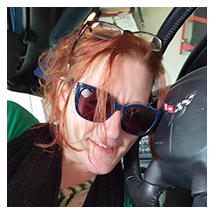 Angie Tjelmeland
Angie Tjelmeland
Angie Tjelmeland is from Iowa, and was born in Illinois. She's been a trained Weather Spotter for Linn County since 2017 and a CoCoRaHS Rain collector as of 2020. She is retired and disabled from a prior career involving data analysis. The need within the community led her to use her prior knowledge and general interest in Science to report observations.
 Jeff Uhlik
Jeff Uhlik
Jeff Uhlik holds a BFA in Graphic Design from Kent State University and an MA in Interactive Digital Media from San Diego State University. He has spent the better part of 40 years on the bleeding edge of digital media focusing on computer graphics, 3D animation, digital video, web, and interactive media. The last 20 years of that time were spent as a tenured professor and department chair of the Media Arts and Technologies Department at MiraCosta College. He was an early adopter of online education (1998) and retired in 2020. More importantly, he has been a weather geek since he was 10 years old when he got his first weather station, creating weather forecasts for his neighbors. He continues to be active in weather projects such as AMS Weather Band, CoCoRaHS, Weatherlink, and Mountain Rain/Snow. He is an avid equestrian in 3-day eventing and riding to the hounds and currently lives with his wife Julie, their five horses and three dogs in the Sierra Nevada foothills north of Reno NV.
